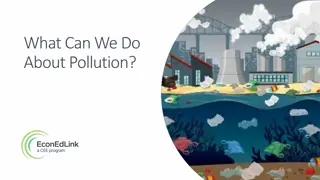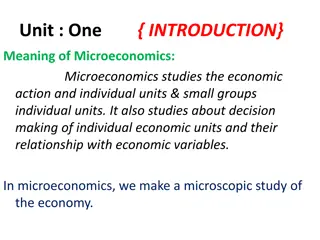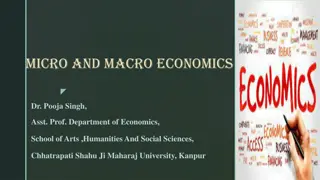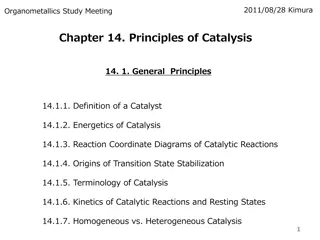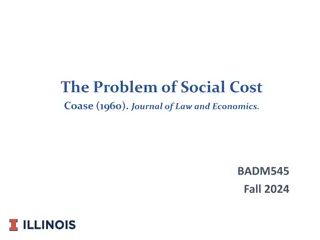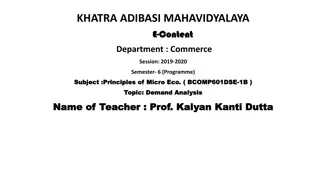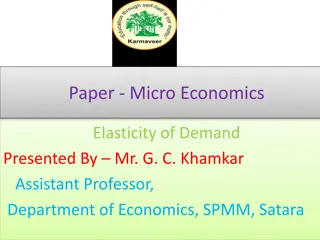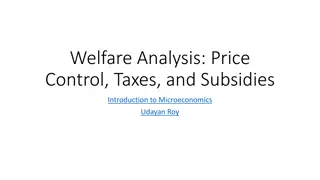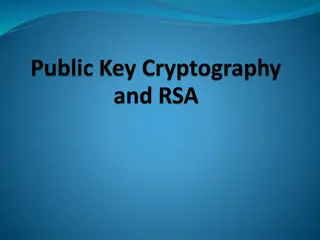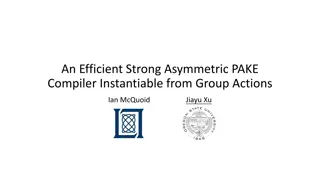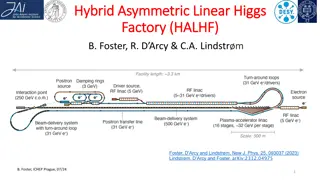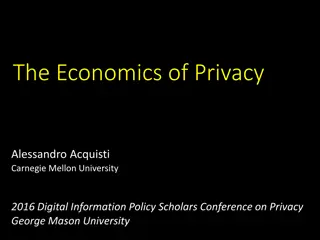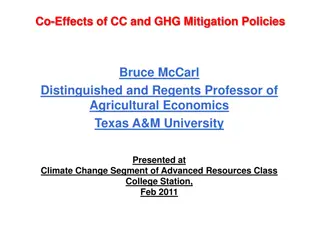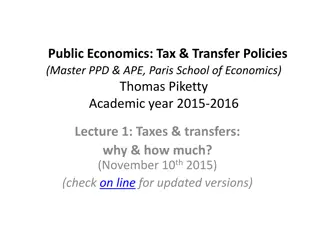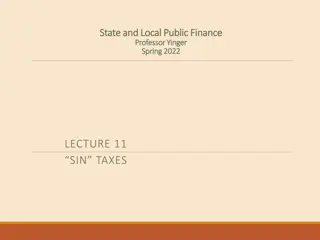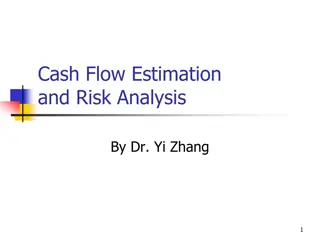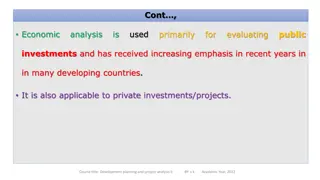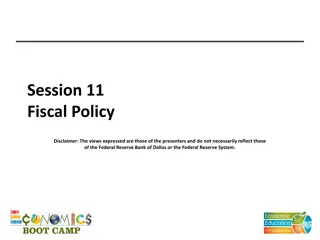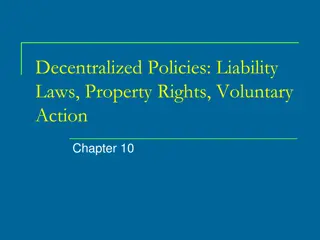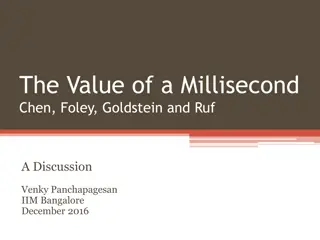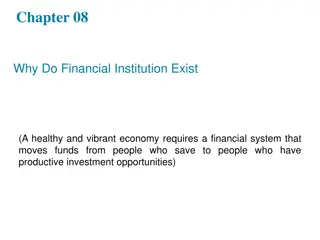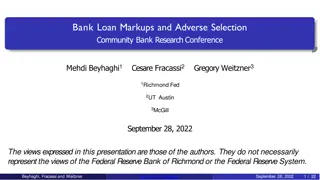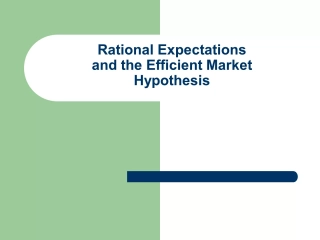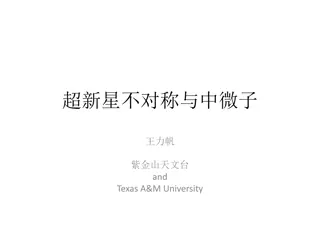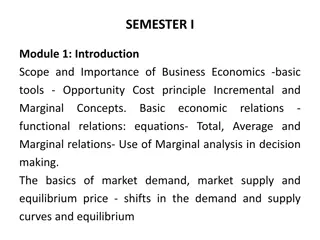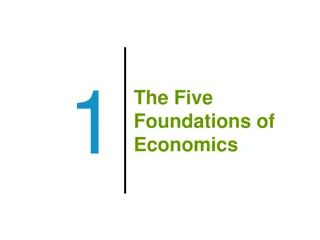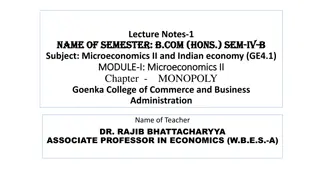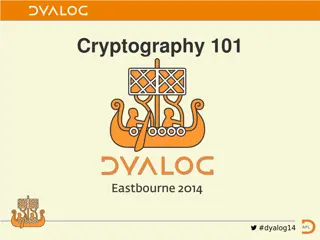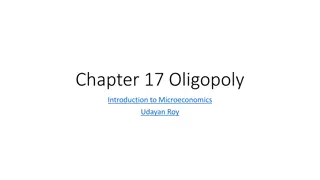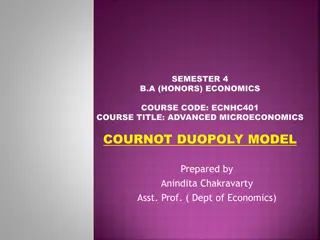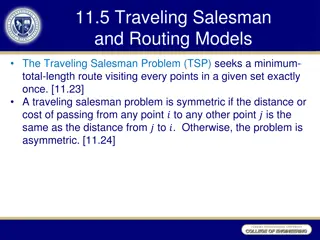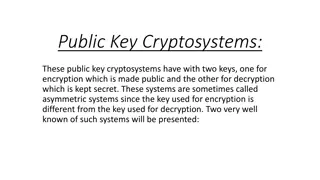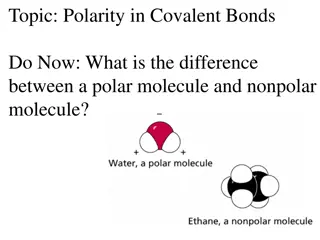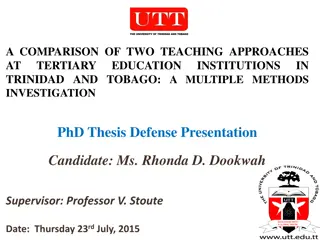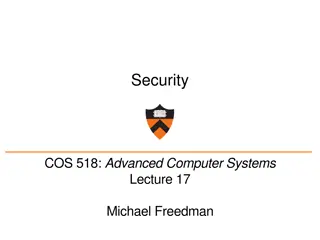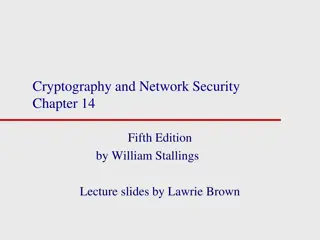Understanding Asymmetric Information and Externalities in Microeconomics
Explore the concepts of adverse selection, market inefficiency, signaling, and moral hazard arising from asymmetric information in microeconomics. Delve into scenarios like the Market for Lemons and health insurance to grasp how information deficiencies impact economic outcomes. Additionally, analyze the equilibrium in a used car market with varying qualities to understand pricing dynamics.
Download Presentation

Please find below an Image/Link to download the presentation.
The content on the website is provided AS IS for your information and personal use only. It may not be sold, licensed, or shared on other websites without obtaining consent from the author. Download presentation by click this link. If you encounter any issues during the download, it is possible that the publisher has removed the file from their server.
E N D
Presentation Transcript
Tutorial 4: Asymmetric Information and Externalities Matthew Robson University of York Microeconomics 2 1
Question 1 Which of the following statements is false? a) Adverse selection is an outcome of an informational deficiency. b) Adverse selection will necessarily lead to market inefficiency. c) Signalling is an effective way to improve information and therefore helps cure the problem of adverse selection. d) Asymmetric information could lead to moral hazard problem. e) None of the above. 2
Question 1 a) Adverse selection is an outcome of an informational deficiency. True, e.g Market for Lemons Buyers do not know the type of the car, a lemon or a peach Adverse selection will necessarily lead to market inefficiency. True, e.g. Different Quality Umbrellas Can lead to a situation where the whole market is destroyed, no trading takes place Signalling is an effective way to improve information and therefore helps cure the problem of adverse selection. True, e.g. Qualifications Firms receive a signal from a qualification, and can operate a separating equilibrium Asymmetric information could lead to moral hazard problem. True, e.g. Health Insurance Ex-Ante Moral Hazard can t track if individual is being more risky (smoking, skiing) Ex-Post Moral Hazard excess use of hospital services (unnecessary doctor visits) b) c) d) 3
Question 1 Which of the following statements is false? a) Adverse selection is an outcome of an informational deficiency. b) Adverse selection will necessarily lead to market inefficiency. c) Signalling is an effective way to improve information and therefore helps cure the problem of adverse selection. d) Asymmetric information could lead to moral hazard problem. e) None of the above. 4
Question 2 200 used cars for sale. The fraction of peaches is ? and the fraction of lemons is 1 ?, where ? [0,1]. Owners are willing to sell a lemon at the price of 300. For peaches, it is 1,100. Buyers are willing to pay 400 for a lemon and 2,100 for a peach. Buyers do not know which car is lemon or peach but sellers know. Which of the following statements is correct? a) b) Equilibrium only exists when ? = 1/2 . c) An equilibrium: all cars sell for 1,100 when ? 7/17. d) An equilibrium: lemon for 300 and peach for 1,100. e) An equilibrium: lemon for 400 and peach for 2,100. The only equilibrium is all lemons sell for the price of 400. 5
Question 2 A buyer s expected value is (at most): ?? = ? 2100 + 1 ? 400 ?? = 1700? + 400 If there is only 1 price, then buyers will pay that price only if: ?? Price If Pri?? = 1100: 1700? + 400 1100 7 17 ? Therefore (c). 6
Question 3 Bob s utility function is ? ?2, where ? is income and ? is hours worked per day. He can work in the city for 8 hours per day, earning $100 a day. Alternatively, he can rent a small farm from Mrs. Incencont. If he rents the farm, he can work as many hours a day as he wishes. If he works ? hours per day, he can sell the crops for a total of $20? per day, but he must pay Mrs. Incencont a daily rent of $?. Mrs. Incencont wants to charge the highest rent $? that she can and still be able to have Bob rent from her. What is the highest rent she can charge? a) b) c) d) e) A penny less than $18. A penny less than $32. A penny less than $50. A penny less than $64. A penny less than $100. 7
Question 3 Bob s reservation value by working in the city is: ??= ? ?2= 100 82= 36 On the farm, Bob s income is revenue minus rent: ? = ? ? ? As Bob wants to maximise his utility, he maximises: ??= ? ? ? ? ? The farmer (Mrs. Incencont) s problem is: max?, ?.?. ??= ?? Now we use the rental contract and consequently: ? ? ? ? ? = ?? ? = 20? ?2 36: The farmer maximizes R, by calculating the ???: 20 2? = 0. So, ? = 10. Hence, ? = 64, and the correct answer is (d). 8
Question 4 There are two types of bicycles to be manufactured: H and L. Buyers value a type H bicycle at $240 and an L bicycle at $180. Buyers cannot tell the type of a bicycle before buying it but producers (i.e. sellers) know. The cost of producing an H bicycle is $230, and the cost of producing an L bicycle is $190. Which of the following statements is correct? a) b) c) There can exist a market equilibrium in which only H bikes are traded. The market has no equilibrium. There does not exist a market equilibrium for H bikes to be traded, but there exists a market equilibrium in which only L bikes are traded. There can exist a pooling market equilibrium in which both H and L bikes are traded at the price of $210. There can exist multiple equilibria in this market. d) e) 9
Question 4 A buyer s expected value is: ?? = ? 240 + 1 ? 180 = 60? + 180 60? + 180 230 ? 5 6 But then a high-quality seller can switch to making low-quality and increase profit further on each bicycle sold. Since all sellers reason this way, the fraction of high-quality sellers will shrink towards zero - but then buyers will pay only $180, which is lower than the cost of $190. So there is no equilibrium in the market. So (b) is correct. 10
Question 5 A labour market has two types of workers: H (for high ability) and L (for low ability). An H worker s marginal product is 100, and an L worker s marginal product is 60. There are 30% of all workers belong to type H. So 70% is the fraction of L workers. Workers can acquire education as a credible signal for high ability. Education costs an H worker 2 per unit of education and costs an L worker 4 per unit. 11
Question 5 Which of the following statements is false? a) If there exists a separating equilibrium, it necessarily requires every H worker to obtain an education level higher than 10. There is a separating equilibrium where every H worker obtains education level 15 and is paid a wage of 100, and every L worker obtains education level 10 and is paid a wage of 60. There is a pooling equilibrium where every worker is paid a wage of 72 and the education level that all workers get is less than 3. There is a pooling equilibrium where every worker is paid a wage of 72 and every worker has zero education level. None of the above. b) c) d) e) 12
Question 5 The expected marginal product is 100 3 + 60 7 = 72. Since 72 < 100, the H workers have incentive to get a credible signal to differentiate them from L workers. An H worker will do so if: ?? ??= ?? ??> ??? 100 60 > 2? 20 > ? And: ?? ??= ?? ??< ??? 100 60 < 4? 10 < ? Which implies that 10 < ? < 20, so (a) is correct. 13
Question 5 For the pooling equilibrium, we know: ?? = 72 ? ?? ?? ?? 0.3 100 60 4 ? ? 3 So, (c) and (d) are correct. Finally, (b) is false because this is not an equilibrium as L workers would be better off by not obtaining any education unit. 14
Question 6 Externalities: a) are not reflected in market prices, so they can be a source of economic inefficiency; do become reflected in market prices, so they can be a source of economic inefficiency; are not reflected in market prices, so they do not adversely affect economic efficiency; do become reflected in market prices, so they do not adversely affect economic efficiency; may or may not become reflected in market prices, but do not have an impact on economic efficiency in either event. b) c) d) e) 15
Question 6 Externalities: a) are not reflected in market prices, so they can be a source of economic inefficiency; do become reflected in market prices, so they can be a source of economic inefficiency; are not reflected in market prices, so they do not adversely affect economic efficiency; do become reflected in market prices, so they do not adversely affect economic efficiency; may or may not become reflected in market prices, but do not have an impact on economic efficiency in either event. b) c) d) e) 16
Question 7 Dry cleaning of clothing produces air pollutants. Therefore, in the market for dry cleaning services, equilibrium price a) and output are too low to be optimal; b) and output are too high to be optimal; c) is too low to be optimal, and equilibrium quantity is too high; d) is too high to be optimal, and equilibrium quantity is too low; e) is optimal, but there is an excess supply. 17
Question 7 Dry cleaning of clothing produces air pollutants. Therefore, in the market for dry cleaning services, equilibrium price a) and output are too low to be optimal; b) and output are too high to be optimal; c) is too low to be optimal, and equilibrium quantity is too high; d) is too high to be optimal, and equilibrium quantity is too low; e) is optimal, but there is an excess supply. 18
Question 8 Improved information may not generally improve gains to trade of the market, but in some cases it does help improve the market efficiency. Is this claim true? If yes, justify your answer by two relevant examples. If not, provide explanation. Yes, it s true. Signalling in labour market is an example showing that improved information need not change the output, while education is costly. So it actually worsened the market s efficiency. On the contrary, for second-hand car market, improved information can restore the market, and therefore, improve market efficiency. 19
Question 9 The farmer Mrs. Incencont hires a worker Bill. The farmer can gain revenue $20? per day where ? is hours worked by Bill per day. Bills utility function is ? ?2, where ? is income and ?2is the cost function. Bill s reservation value is $10. What optimal wage contract can you design for Mrs. Incencont? 20
Question 9 Suppose that Bill s reservation value is 10. The farmer (Mrs. Incencont) s problem is: max 20? ? . , As, ?(.) = ?2+ 10, the problem becomes: max ? FOC = 20 2? = 0 ? = 10 Mrs. Incencont can get 20 10 102 10 = 90 (at most) when Bill works 10 hours. Hence, similar to rental contract, here the optimal contract will be: ? . = 20? 90 By doing this, Mrs. Incencont secures 20? (20? 90) = 90 Of course, in order to provide a positive incentive, here we take 89.99 so that the net utility is 10.01 for Bill, which is higher than his reservation value 10. That is, the optimal contract is ? . = 20? 89.99. ?2= 10 ?.?. ? . 20? ?2 10 21
Question 9 There are 3 types of farmer, who can earn $??: $10?, $20?, $30? There are 3 types of workers, with reservation prices $?: $0, $10, $20 We have the farmers problem: ?2= ? max ?? ? . , ?.?. ? . For farmers calculate your maximisation problem, and find your optimal wage contract, for a given ?. For workers, find the minimum wage contract you would accept. Find others who will take up a contract with you Calculate your profit. 22


